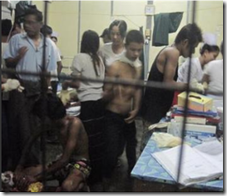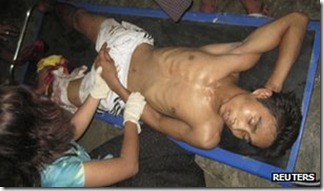At the start of June, shortly after arriving in Bangkok for her first international trip since 1988, Aung San Suu Kyi warned against ‘reckless optimism’ over Burma’s reform process.
Sadly, the intervening days have demonstrated precisely how seriously that warning should be taken. For though the nation’s impressive liberalisation continues onward, the bumps on the road ahead have been starkly highlighted.
The week’s troubles began at Mae La refugee camp where some 40 000 Karen civilians live, having fled ethic cleansing by successive Burmese regimes. Suu Kyi’s visit to the camp was one of the most highly anticipated parts of her Thai trip, but whilst she was cheered by thousands of refugees who had gathered on the streets since the early hours, it quickly descended into something of a shambles.

Though Suu Kyi summed up the Thai trip as positive overall, the Mae La leg revealed the kind of intrigue, infighting, organisational hazards and image risks that the NLD faces as an engaged player on the political scene.
 Moods were dampened further just days later, when news of a horrendous sectarian incident emerged from the Western Burmese town of Taungup. Following the gang-rape and murder of a young girl, allegedly by Burmese Muslims, one hundred citizens set upon a bus returning from the local Mosque. Ten innocent Muslims were beaten to death before the bus was set on fire. Minor rioting followed, as unfounded rumours spread that Muslims had kidnapped and murdered a local politician in a possible revenge attack. Further protests and tensions have followed since, raising tensions and fear of further violence.
Moods were dampened further just days later, when news of a horrendous sectarian incident emerged from the Western Burmese town of Taungup. Following the gang-rape and murder of a young girl, allegedly by Burmese Muslims, one hundred citizens set upon a bus returning from the local Mosque. Ten innocent Muslims were beaten to death before the bus was set on fire. Minor rioting followed, as unfounded rumours spread that Muslims had kidnapped and murdered a local politician in a possible revenge attack. Further protests and tensions have followed since, raising tensions and fear of further violence.
Racial and sectarian fault-lines have of course been part of Burmese politics for as long as Burma has existed. Stoked by the government over the years they are prone to turn violent and could well reflect an ugly side of liberalisation. After all, new freedoms to speak, gather, organise and demonstrate are just as beneficial to mobs and racists as they are to democrats and human rights activists.
Whilst this is not a criticism of such freedoms, it is a real issue that needs to be addressed as Burma continues down the rocky path to democracy, not least because the government has used racial conflict as an excuse for crackdowns in the past. Underlying tensions are unlikely to be resolved quickly and tit-for-tat violence is a constant threat.
Ultimately the past week has also brought positive developments; Suu Kyi has been allowed to leave the country and return freely; she has been unprecedentedly praised in the state-run press; and the government has publicly terminated its ominous nuclear venture. But there have been bumps in the road….and there are likely to be many, many more before Burma finally achieves its freedom.




No comments:
Post a Comment